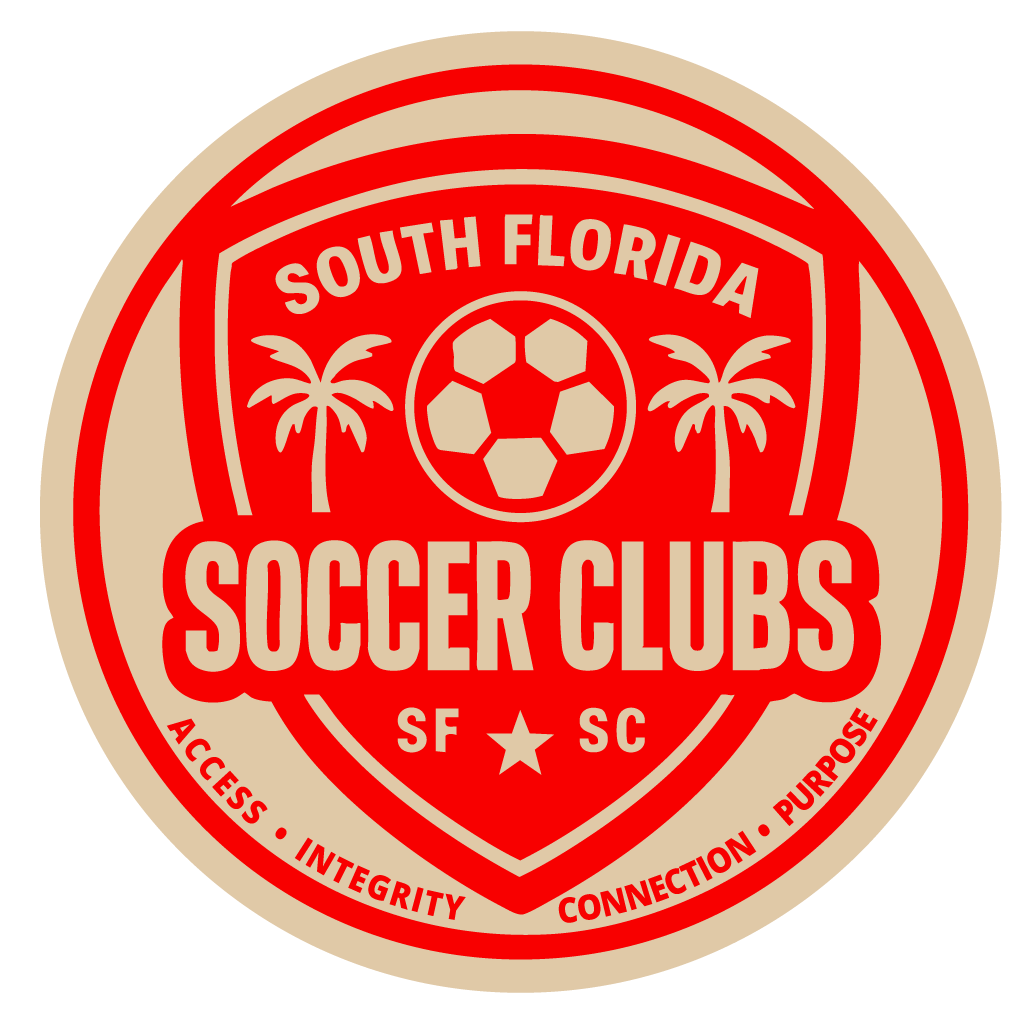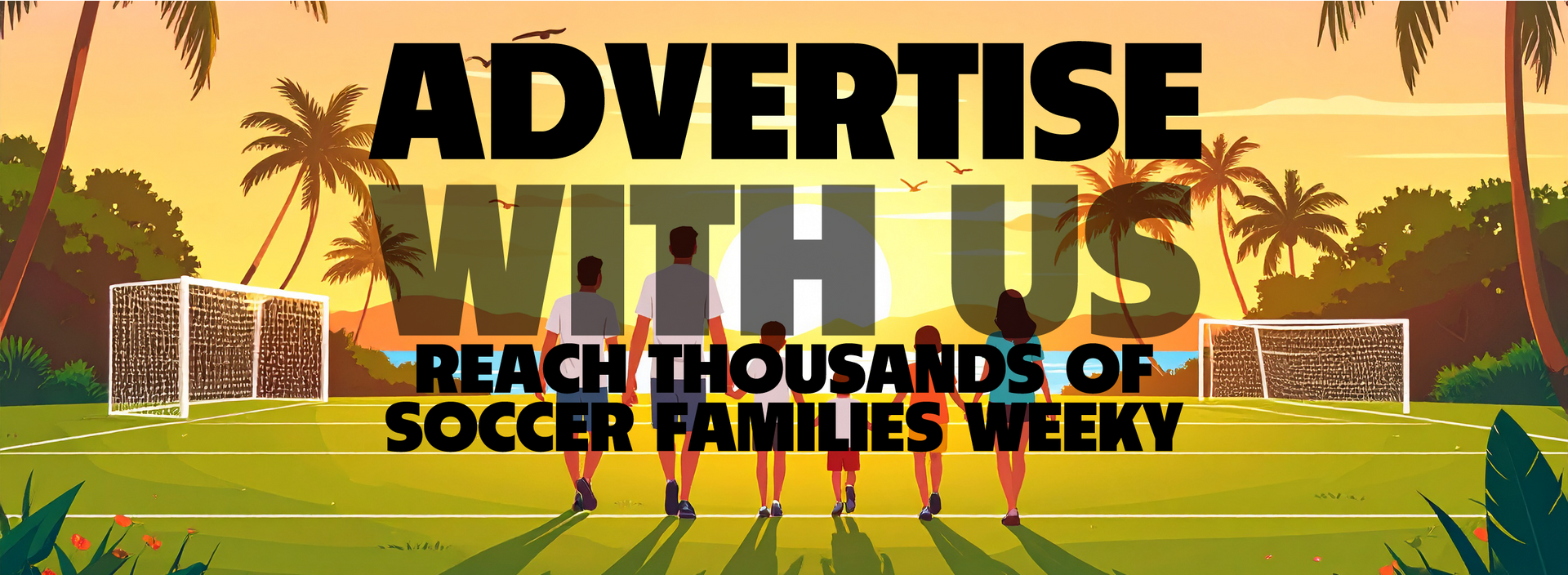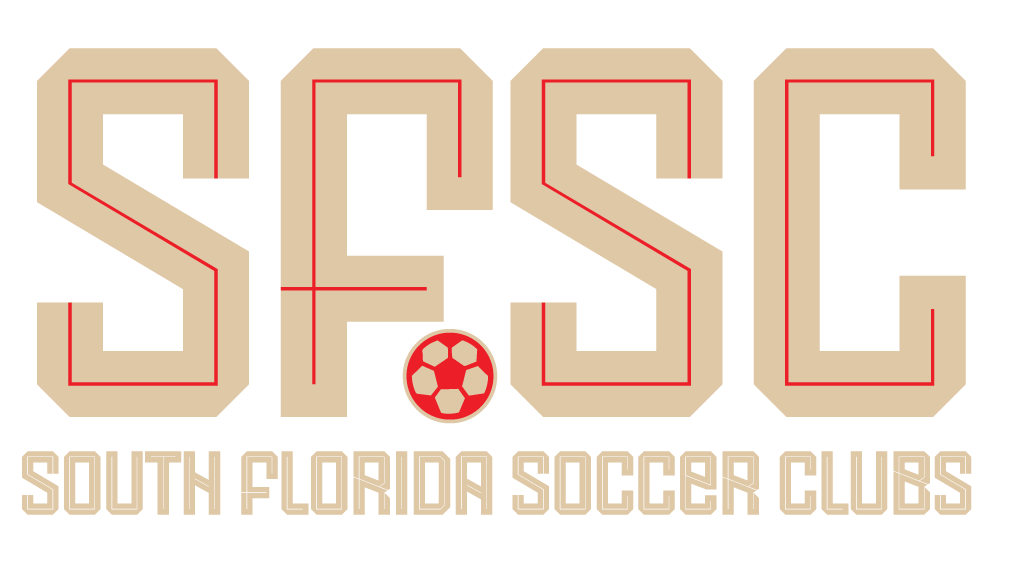Game Time Rules in Youth Soccer
At South Florida Soccer Clubs (SFSC), we believe that understanding game formats is just as important as showing up to cheer on your child. Game lengths change as kids move through the age groups, and each adjustment is designed with safety, stamina, and skill development in mind.
This guide breaks down standard match durations across age levels in U.S. Youth Soccer and AYSO, the two most widely recognized frameworks in South Florida.
AYSO (American Youth Soccer Organization)
AYSO keeps things simple and age-appropriate:
- U6 – U8 → 5 minutes halftime
- U10 – U12 → 5–10 minutes halftime
- U14+ → up to 10 minutes halftime
US Youth Soccer (USYS)
The USYS rules of play generally align with FIFA/IFAB but scaled for youth:
- U6 – U8 → 5 minutes
- U9 – U12 → 5–10 minutes
- U13+ → 10 minutes (some tournaments allow up to 15)
ECNL (Elite Clubs National League) & MLS NEXT
These leagues follow professional standards more closely:
- U13 – U19 → 10 minutes halftime (sometimes shortened to 5 minutes in showcase/tournament schedules to stay on time).
High School (NFHS rules, U.S.)
- Junior Varsity & Varsity → 10 minutes halftime (can be shortened to 5 by mutual agreement or if games run late).
College (NCAA)
- Standard halftime: 15 minutes.
FIFA / International Youth Tournaments
- For U17 and above (like U-17 World Cup): 15 minutes halftime (full FIFA rules).
- Younger international youth competitions sometimes go with 10 minutes.
Game Lengths by Age Group
| Age Group | Standard Format | Overtime? | SFSC Notes | Typical Halftime |
|---|---|---|---|---|
| U6 | 4x6-min quarters or 2 x10-min halves | No | SFSC Notes | 5 min |
| U8 | 4x12-min quarters or 2 x20-min halves | No | Small-sided play, usually no goalkeeper, lots of touches. | 5 min |
| U10 | 2 x25-min halves | No | More structure, slightly bigger field, kids learn positions. | 5-10 min |
| U12 | 2 x30-min halves | Optional 2x10-min OT | Transition age: competitive format begins. | 5-10 min |
| U14 | 2 x35-min halves | Optional 2x10-min OT | Matches start to resemble full-sized soccer. | 10 min |
| U16 | 2 x40-min halves | Optional 2x15-min OT | Endurance grows; nearly a full adult game. | 10 min |
| U19 | 2 x45-min halves | Optional 2x15-min OT | Full FIFA adult format. | 10 min |
What Parents Should Know
- Shorter games aren’t “less serious.” They’re designed to match how much energy kids can safely handle while still learning.
- Extra time is rare. In most recreational games, overtime is skipped, especially at younger ages.
- Tournament play may differ. Knockout rounds sometimes include overtime or penalty shootouts even for younger age groups.
- Leagues can vary. Always confirm with your club or league, since formats can differ slightly between U.S. Youth Soccer, AYSO, FYSA, ECNL, or MLS NEXT.
SFSC Key Takeaway
Game lengths grow with the players. What begins as short, fun quarters for a six-year-old eventually becomes a full professional-length match by the time players reach U19. It’s all about building endurance, skill, and love for the game step by step.
Youth Soccer Game Day Rules
At South Florida Soccer Clubs (SFSC), we want parents, players, and coaches to have one clear reference for how the game is played at every age. Game time rules are only part of the picture , substitutions, hydration, and uniforms are equally important for keeping the game safe, fair, and enjoyable.
Substitutions
Recreational Leagues (AYSO, FYSA Rec, local leagues):
- Unlimited substitutions allowed at specific stoppages (goal kicks, kickoffs, halftime, and when the referee permits).
- Goal is equal playing time for all kids.
Competitive Leagues (ECNL, MLS NEXT, FYSA Premier):
- Limited re-entry rules apply.
- Sub windows often restricted (e.g., 7 total subs per game at higher ages, no re-entry in the second half at elite levels).
- Designed to prepare players for college/pro standards.
"Ask your coach which system applies. Recreational = everyone rotates. Competitive = strategy matters."
Water Breaks
Florida Heat Rule (FYSA & USSF guidelines):
- Mandatory water breaks in high heat/humidity.
- Typically one break midway through each half when temp > 85°F or heat index is high.
- Referee stops the clock; players hydrate at sidelines.
Regular Play:
- Quick water sips are allowed at substitutions or stoppages, but no on-field bottles.
-
SFSC Takeaway: Florida leagues take hydration seriously, expect scheduled water breaks in hot months, especially May–September.
Uniforms & Equipment
- Jersey: Must match team color; home teams usually wear dark, away teams wear light (check league rules).
- Shin Guards: Required at all ages, under socks. No shin guards = no play.
- Cleats: Soccer-specific cleats recommended; no baseball/football cleats with toe studs.
- Jewelry: Not permitted (earrings, bracelets, necklaces). Medical bracelets allowed if taped.
- Goalkeepers: Must wear a distinct color jersey different from both teams and referees.
- Numbering: Most leagues require a visible number on the back.
-
SFSC Takeaway: Uniform checks happen at every match , best to be game-ready before stepping on the field.
Game Flow Extras & Final Word from SFSC
- Kickoffs & Restarts: Follow FIFA rules, though some younger leagues modify (e.g., no direct shots from kickoff at U8).
- Ball Size:
- U6–U8: Size 3
- U9–U12: Size 4
- U13+: Size 5 (adult)
- Field Size: Shrinks for younger groups, U6 fields may be half or even quarter size, gradually growing with age.
Youth soccer rules evolve with the kids. From short games, unlimited subs, and bright uniforms at U6, to full matches, tactical substitutions, and regulation equipment at U19, every step is designed to build confidence, stamina, and love for the game.



